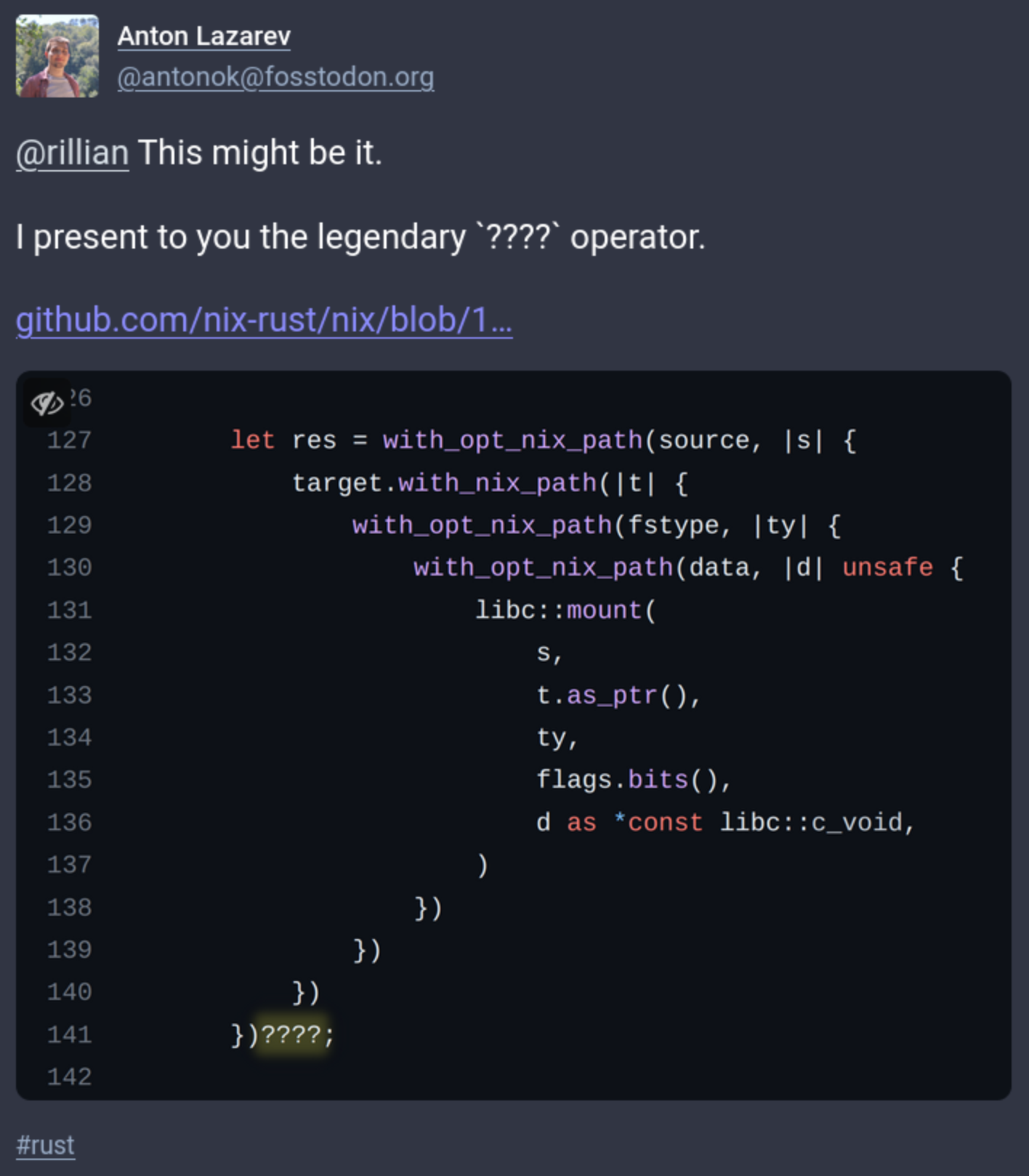this post was submitted on 27 Sep 2023
185 points (97.4% liked)
Rust
5751 readers
27 users here now
Welcome to the Rust community! This is a place to discuss about the Rust programming language.
Wormhole
Credits
- The icon is a modified version of the official rust logo (changing the colors to a gradient and black background)
founded 1 year ago
MODERATORS
you are viewing a single comment's thread
view the rest of the comments
view the rest of the comments

I think the issue with this is that the code (https://docs.rs/nix/0.27.1/src/nix/lib.rs.html#297) allocates a fixed-size buffer on the stack in order to add a terminating zero to the end of the path copied into it. So it just gives you a reference into that buffer, which can't outlive the function call.
They do also have a
with_nix_path_allocatingfunction (https://docs.rs/nix/0.27.1/src/nix/lib.rs.html#332) that just gives you aCStringthat owns its buffer on the heap, so there must be some reason why they went this design. Maybe premature optimization? Maybe it actually makes a difference? 🤔They could have just returned the buffer via some wrapper that owns it and has the
as_cstrfunction on it, but that would have resulted in a copy, so I'm not sure if it would have still achieved what they are trying to achieve here. I wonder if they ran some benchmarks on all this stuff, or they're just writing what they think will be fast.Some applications have a hard zero-alloc requirement.
But that's not the case here, seeing as they have
in the code of with_nix_path. And I think they still could've made it return the value instead of calling the passed in function, by using something like
But I don't know what performance implications that would have, and whether the difference would matter at all. Would there be an unnecessary copy? Would the compiler optimize it out? etc.
Also, from a maintainability standpoint, the context through which the library authors need to manually ensure all the unsafe code is used correctly would be slightly larger.
As a user of a library, I would still prefer all that over the nesting.